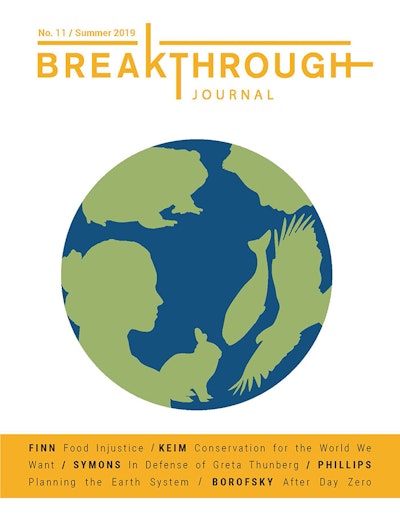Book Review: Meet the Food Radicals
-
-
Share
-
Share via Twitter -
Share via Facebook -
Share via Email
-
Meet the Food Radicals
by F. Bailey Nordwood and Tamara L. Mix
Oxford University Press, 2019
“Radical ideas in agriculture are not just controversial because they are new, but because they involve culture wars as well,” write Oklahoma State University professors Bailey Norwood and Tamara Mix in their newly published book, Food Radicals.
Entertaining these ideas, then, usually involves deliberately stepping out of your cultural comfort zone and entertaining perspectives that may align with another ideology or subculture. It’s hard work for most people, and all the more reason why Food Radicals is a valuable resource.
Norwood and Mix lay out the views of the 27 farmers, activists, scholars, technologists, and other food system leaders who have bold, often conflicting visions. In doing so, they have created a book where readers from all corners of the food system can find ideas they agree with, and many that push them to expand their perspectives. For example, Norwood explains how he initially viewed alter-globalization protesters as “crazy,” but that after talking with sociologist Amory Starr and reading her writings, he realized he misunderstood some of the core alter-globalization arguments.
But the authors attempt to present these bold visions without judgment, and their commitment to remain “balanced” can be frustrating. Debates about food, agriculture, and sustainability are already partially driven by misinformation and lack of knowledge about the benefits and challenges of modern farming. Norwood and Mix could help diminish this by sharing their own perspectives. After all, the authors, as professors at Oklahoma State University, have a front-row seat to developments in modern agriculture. Instead of presenting an array of opinions and letting readers judge them based on their own preconceptions, Norwood and Mix could guide readers in assessing the claims of their “radicals.” Which ideas should we get excited about; which seem the most feasible?
Nevertheless, by giving voice to such a diverse set of people, the book helped me appreciate a range of deep shifts in the food system, both past and ongoing, and its stories of social and scientific change made me value the role of radicals more highly. As Norwood and Mix write, “we like to think of science progressing by one experiment building upon another... but often new ideas must exist as heresy first, for years being defended by a few individuals seen as radicals.” In following food sustainability news and science for years, I have seen how easy it is to dismiss particular farming methods or technologies, such as rotational grazing or vertical farming, as fringe practices without scientific support. Yet the stories within “Food Radicals” illustrate how often it is risk-taking individuals going against the consensus who spur academics to look at issues differently. For instance, agronomist Ray Archuleta experimented with and advocated for no-till farming long before the Natural Resource Conservation Service began heavily supporting it.
The future of food could be more corporate, decentralized, high-tech, automated, well-paying, plant-centric, animal-centric, small-scale, or large-scale. It can’t be all of these at once. But it will be radically different. Food Radicals expands our understanding of how this future could look.


